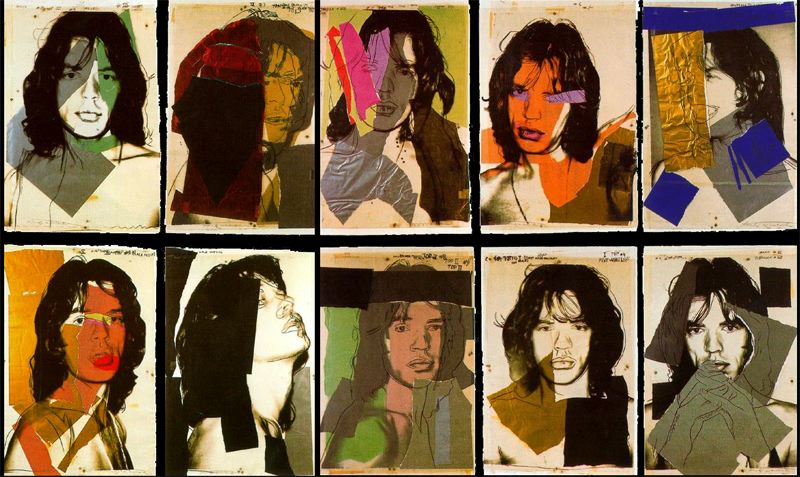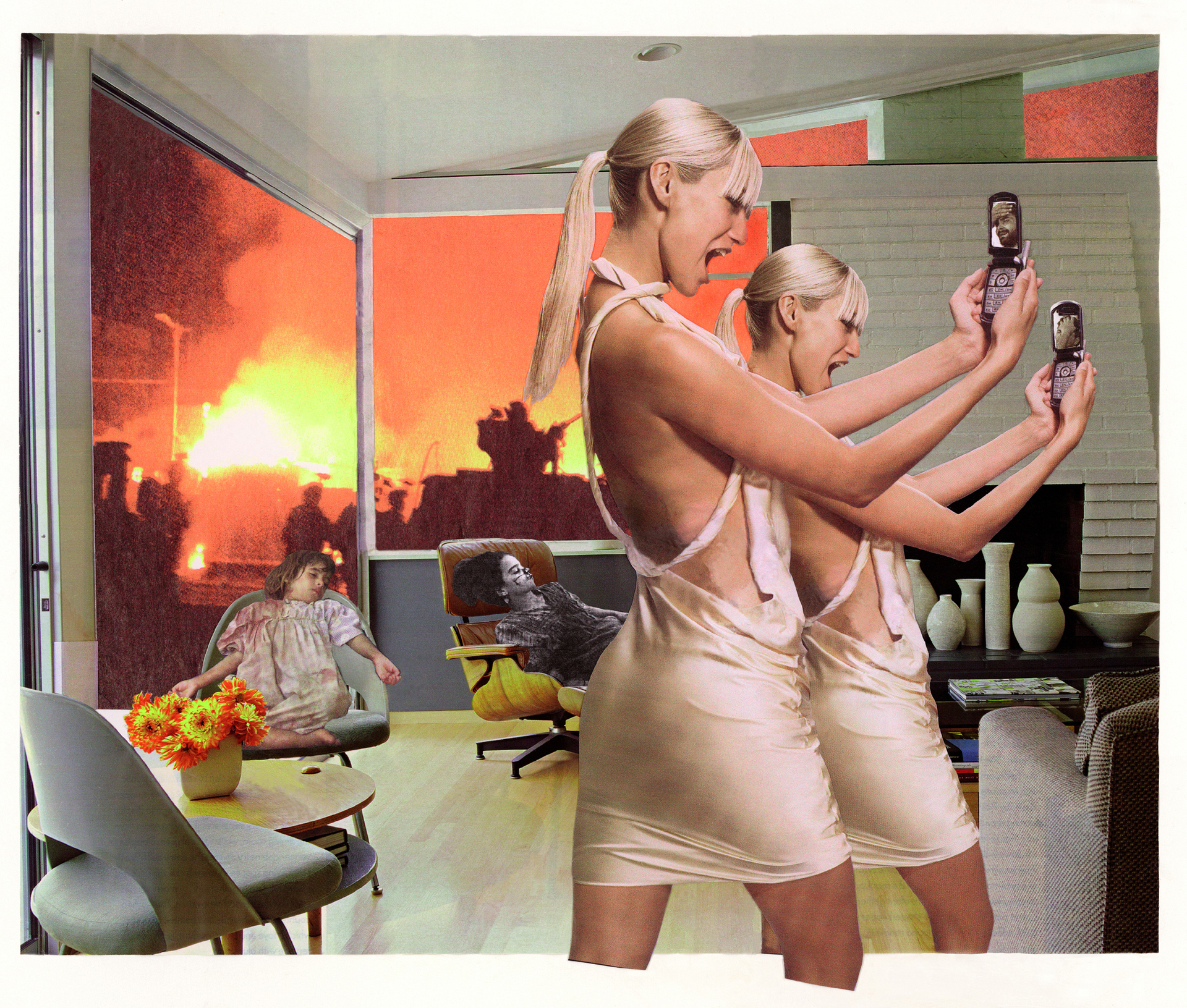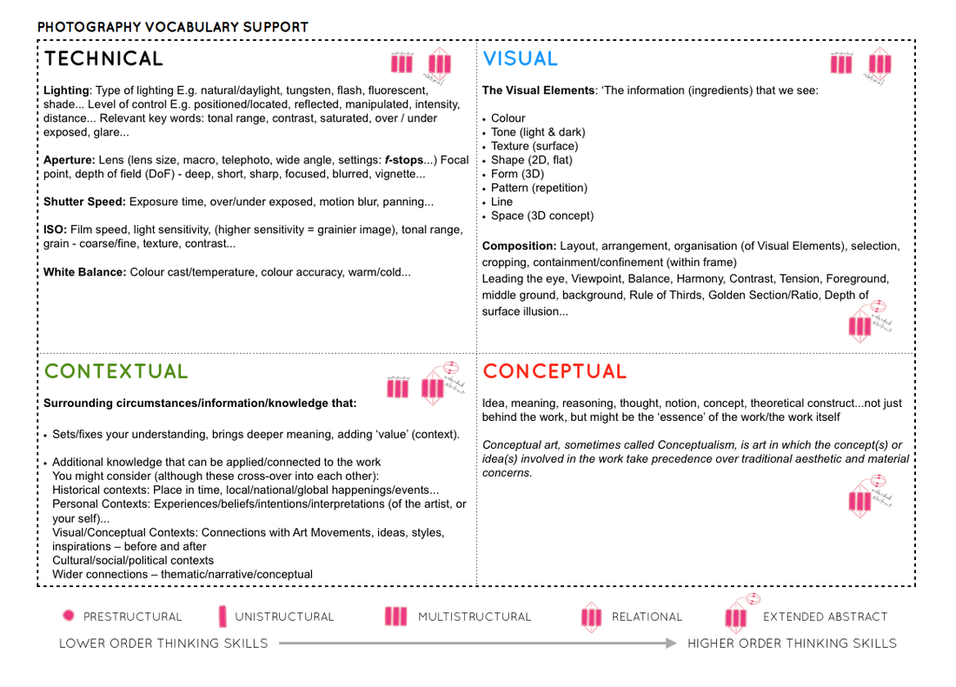This week’s tasks are designed to encourage you to explore your creativity by looking responding to Constructed Portraits.
- Photo-montage
- Composite portraits
- Collage
History of Photo-montage (Europe 1910 onwards)
- A photomontage is a collage constructed from photographs.
- Historically, the technique has been used to make political statements and gained popularity in the early 20th century (World War 1-World War 2)
- Artists such as Raoul Haussman , Hannah Hoch, John Heartfield employed cut-n-paste techniques as a form of propaganda…as did Soviet artists like Aleksander Rodchenko and El Lissitsky
- Photomontage has its roots in Dadaism…which is closely related to Surrrealism







Pop Art developments (USA and UK 1950s-)
- Photomontage was also used to great effect by various Pop Artists in the mid 20th Century
- Pop art was a reaction to abstract expressionism and was similar to DADA in some ways
- Many Pop Art images and constructions tackled popular consumerism, advertising, branding and marketing techniques
- Pop art also explored political concerns such as war, and gender roles too




Examples and Inspiration
- richard hamilton / kurt schwitters / peter blake /
- soviet art
- sammy slabinck
- john stezaker
- jesse treece
- jonny briggs
- david hockney
- hannah hoch
- Annegret Soltau
- Brno de Szou
- Joachim Schmid
- Jesse Draxler
- Peter Kennard
- Eugenia Loli
-
Sarah Eisenlohr
- Grete Stern
- Jerry UELSMANN
- Duane Michals
- Edmund Teske
- Man Ray
- El Lissitsky
- Martha Rosler







.jpg)




In her artist statement Montana based artist Sarah Eisenlohr explains that her collages use places of existence to create fictional ones in an effort to demonstrate the ways in which humans have transformed the earth. These scenes often carry undertones of spirituality and faith. “I consider the figures’ desire for shelter, warmth, and something stronger than themselves as symbols of serenity that I seek through spirituality, while the use of sublime in my work points to a relationship with the divine,”

California based artist Eugenia Loli draws inspiration for her surreal art collages from vintage magazine images. Loli intends for her images to serve as a snap shot from a surreal movie from which the viewer can create his or her own narrative.
Task 1
- Create a blog post that includes a clear understanding of the history and background of photo-montage.
- Include a moodboard / mindmap
- Add examples of Early – late 20th Century Photomontage eh Hannah Hoch
Task 2
- Choose a specific photo-montage artist and write/create a CASE STUDY
- Include a detailed analysis of 1 x key image by the artist
- Add TECHNICAL -VISUAL-CONCEPTUAL-CONTEXTUAL understanding
Task 3
- Create a set of 3-5 photomontage using a mixture of your own imagery (portrait) and “found” imagery….(this could be archival imagery)
- Ensure you include a sense of identity and place
- Show your process clearly…remember to add screen shots etc
- Evaluate your process…describe and explain
Complete over the Christmas Break…and see you all on Tuesday 8th January 2019
KEY COMPONENTS AND DISTINGUISHING FEATURES of PHOTO-MONTAGE
- A NARRATIVE, CONCEPT OR THEME (A MESSAGE OR A COMMENT)
- ARCHIVAL / VINTAGE IMAGERY COMBINED WITH OWN IMAGERY
- SUBVERSION OF MEANING—-POSTMODERNISM
SOURCE MATERIAL YOU CAN USE
- NEWSPAPERS
- MAGAZINES
- ORIGINAL IMAGERY (from studio, tableau, other portraits etc)
- INTERNET-SOURCED IMAGERY
- BOOKS
TECHNIQUES
- MANUAL CUT-N-PASTE (SCISSORS, SCALPEL AND GLUE)
- PHOTOSHOP –
- selection tools (to cut and move elements of images)
- free transform (CTRL T)– to move, re-size and shape elements
- layers and layer masks
- opacity tool
- blending options
- distortion
- proportion
- scale
Ensure you have enough evidence of…
- moodboards
- mindmaps
- case studies (artist references)
- action plans
- photoshoots + contact sheets (annotated)
- appropriate selection and editing techniques
- presentation of final ideas and personal responses
- analysis and evaluation of process
- compare and contrast to a key photographer
- critique / review / reflection of your work
Ensure you discuss / describe / explain your images using key words and vocab…


 Eugene Delacroix ‘Leading the People’
Eugene Delacroix ‘Leading the People’ Carravagio ‘Deposition’
Carravagio ‘Deposition’ David La Chapelle ‘The Last Supper’
David La Chapelle ‘The Last Supper’



































 The last two album covers don’t have a deep meaning like the rest, but I have decided to replicate them as they have been edited in a very interesting way. The first cover has had threshold applied to it and had a pink filter applied over every segment of the photo which isn’t solid black. This creates an old school feel, and joined with bright pink creates a connotation of ‘fun’ which matches the song, there isn’t a deeper meaning, it’s just entertaining.
The last two album covers don’t have a deep meaning like the rest, but I have decided to replicate them as they have been edited in a very interesting way. The first cover has had threshold applied to it and had a pink filter applied over every segment of the photo which isn’t solid black. This creates an old school feel, and joined with bright pink creates a connotation of ‘fun’ which matches the song, there isn’t a deeper meaning, it’s just entertaining.













 This is my take on the ‘starboy’ album cover. I had to change the colours as the blue colour scheme wouldn’t work as well as in the original because of my friend’s ethnicity. I also had to change the positioning of his hands because he has a different hairstyle and colour to the artist. If his hands were in the same pose they would stand out a lot more against his hair; which wouldn’t have the same effect. Also, due to his hair being longer his fingers would be covered up by his hair if he slid them up his head; which would also be less effective than the original album cover.
This is my take on the ‘starboy’ album cover. I had to change the colours as the blue colour scheme wouldn’t work as well as in the original because of my friend’s ethnicity. I also had to change the positioning of his hands because he has a different hairstyle and colour to the artist. If his hands were in the same pose they would stand out a lot more against his hair; which wouldn’t have the same effect. Also, due to his hair being longer his fingers would be covered up by his hair if he slid them up his head; which would also be less effective than the original album cover. The original album cover, it has a much different colour scheme to my version, but these colours work well only in the original because of the artist’s and my model’s ethnicity. The theme of blue-lit black is possible here due to his dark skin tone. There is also a parental advisory tag in the bottom right due to the contents of the album, I didn’t include this in my version because I had already used that tag in previous covers in this project and i didn’t want to repeatedly use them.
The original album cover, it has a much different colour scheme to my version, but these colours work well only in the original because of the artist’s and my model’s ethnicity. The theme of blue-lit black is possible here due to his dark skin tone. There is also a parental advisory tag in the bottom right due to the contents of the album, I didn’t include this in my version because I had already used that tag in previous covers in this project and i didn’t want to repeatedly use them. This is a work-in-progress edit of the photo which I decided to abandon because it looked too __ and didn’t fit the theme of the cover. My idea behind it was to make everything light colours apart from the eyes and cross (this is the opposite of what they did in the original album cover; everything dark apart from eyes and cross), I edited the eyes first and realised that the idea didn’t really work out so I didn’t bother editing the rest of it.
This is a work-in-progress edit of the photo which I decided to abandon because it looked too __ and didn’t fit the theme of the cover. My idea behind it was to make everything light colours apart from the eyes and cross (this is the opposite of what they did in the original album cover; everything dark apart from eyes and cross), I edited the eyes first and realised that the idea didn’t really work out so I didn’t bother editing the rest of it.
 This is the original album cover for ‘Fallacy’. It has a lot of layers placed on top of each other; which fills in the empty space which the main photo would otherwise have. There are plenty gray/dull coloured layers and red elements to highlight the artist’s head, title of the album, as well as leaves in the bottom left corner.
This is the original album cover for ‘Fallacy’. It has a lot of layers placed on top of each other; which fills in the empty space which the main photo would otherwise have. There are plenty gray/dull coloured layers and red elements to highlight the artist’s head, title of the album, as well as leaves in the bottom left corner.


 This is the original photo, I chose to take it in front an urban background in hope to achieve some distortion in the background after I applied the filters.
This is the original photo, I chose to take it in front an urban background in hope to achieve some distortion in the background after I applied the filters. This is the image after I had edited it, but before cropping and adding and lettering. As you can see there is distortion in the background due to its texture, however its only present around the outer edges, so it wasn’t visible in the final cover after I had cropped it.
This is the image after I had edited it, but before cropping and adding and lettering. As you can see there is distortion in the background due to its texture, however its only present around the outer edges, so it wasn’t visible in the final cover after I had cropped it.